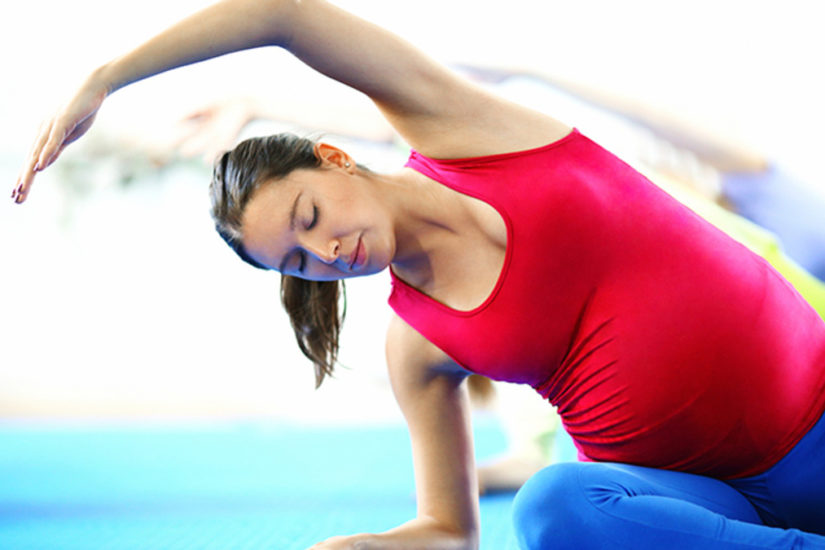It is the accepted dogma in the health and fitness industry that stretching is an important part of a regular training program. We’ve been told that passive stretching will help prevent injury, improve performance, reduce DOMS, and should be part of a warm-up and cool-down.
However, there is no scientific evidence to support these claims, and in fact there is mounting scientific research to show otherwise. Despite this, there seems to be a lot of conflicting advice about how and when to stretch. I’ve seen too many trainees unable to perform optimally or suffer from recurring injuries, in part due to improper stretching habits. It’s time to take a closer look at stretching and flexibility training.
A general definition of flexibility is the measure of the range of motion at a joint or group of joints and the ability to move a joint through its complete range of motion.
There are 2 main categories of stretching: passive and active.
Passive stretching is when you use an outside force other than your own muscle to move a joint or limb beyond its active range of motion, to put your body into a position that you couldn’t do by yourself (such as when you lean into a wall, or have a partner push you into a deeper stretch). Unfortunately, this is the most common form of stretching used.
Active stretching eliminates outside force and it’s adverse effects from stretching procedures. It involves actively using your own muscles to achieve range of motion; as the antagonist (opposite) muscle contracts, the agonist (target) muscle groups lengthen and relax. This is a safe, effective, and recommended method of stretching.
Stop Being So Passive!
Although most people are more familiar with traditional passive stretching (where you push into a deep stretch, without muscular effort), it can actually hurt your performance and can potentially cause injury! Research from the American Journal of Applied Physiology and reports brought to us by the American College of Sports Medicine both show that passive stretching can decrease strength and muscular power output by up to 20 %.
Passive stretching can also tear your soft tissue thus creating less available muscle for you to create power. This is especially significant if you consider that many athletes are still doing passive stretching prior to training or competition!
Studies have proven that static passive stretching will dampen the nervous system activation of the involved muscles, essentially making them looser, weaker, and less stable for at least an hour afterwards. This reduces strength and joint stability and can negatively affect your athletic performance as well as increase risk of injury. Researchers have concluded that passive stretching not only has no effect on preventing injuries, but it can actually make you even more likely to get hurt.
A study consisting of 1543 serious runners linking stretching to muscle problems found that 47% of all male runners who stretched regularly were injured during a one-year period, while just 33% of male runners who didn’t stretch were hurt; a statistically significant difference.
Another study indicates that athletes in the highest 20% of the flexibility continuum are actually the ones with the highest rates of injury!
Some people might argue that they can achieve a greater range of motion using passive stretching. However, this increased range of motion in static positions does not carry-over to the dynamic range of movement associated with sport. Even worse, achieving excessive range of motion is not necessarily beneficial to an athlete, and could even be injurious.
Although this type of stretching may temporarily relieve joint, muscle and back pain in some cases, it can ultimately aggravate the underlying condition, and increases weakness and instability. This may be hard for many trainers, coaches, and athletes to accept, but it is evidently very hard to justify including passive stretching anywhere in a training program. It is generally a less desirable way to improve flexibility and range of motion. If you are going to use passive stretches, at least do them only at the end of a workout or practice (never before) and follow each stretch with an active hold of that position.
Get Active!
So what is the alternative for improving flexibility? Active stretching is a safe effective method of maintaining a healthy range of motion, while increasing joint stability and strength. Because muscle ‘tightness’ is often due to compensation for joint instability or weakness in another muscle, developing strong, stable joints allows a greater range of motion.
It is recommended to perform active range of motion (AROM) exercises following a workout, game, or practice session. The “stretch” positions can be very similar to passive stretches, but they are being held using muscular effort, not outside force. Actively hold each position for 10 to 15 seconds. Active stretching can also be incorporating into effective flexibility techniques such as ProprioNeuromuscular Facilitiation (PNF).
Examples of some basic AROM static stretches include:
· Lats- reaching your arms straight overhead
· Chest- extend your arms out to the sides, and retract your shoulder blades
· Quadriceps- flex your heal toward your butt, contracting the hamstrings
· Hamstrings- extend your leg straight in front of you, and contract the quads
Warming Up To A Dynamic Approach
Dynamic stretching is another form of active range of motion that is recommended before training, practice or competition, and has been shown to reduce muscle tightness while increasing nervous system activation. Dynamic warmup exercises involve moving parts of your body and gradually increasing reach, speed of movement, or both.
Do not confuse dynamic stretching with ballistic stretching (which is not recommended)! Dynamic stretching consists of controlled leg and arm swings that gently and progressively move you within the limits of your range of motion. Conversely, ballistic stretches involve bouncing or “jerky” movements, trying to force a part of the body beyond its range of motion. Dynamic stretching avoids bouncing motions and tends to incorporate more sport-specific movements, such as arm circles, torso rotations, butt kicks, high knee lifts and walking lunges (without weights).
Recent scientific studies indicate that dynamic stretches before physical activity are preferable to static passive stretches. This may be particularly true for strength and power athletes.
Conclusion:
Athletes, coaches, trainers, and others need to use the combination of strength training, conditioning, and warming up that’s best for a given sport or activity. In general, it is recommended to perform a dynamic warm up before training and incorporate some active range stretches afterwards. Also consider that stretching naturally occurs when you exercise. In order to contract a muscle, the opposite muscle groups have to be relaxed and lengthening.
I understand that this may be new information for many readers. However, to quote Emma Wilkinson from the British Medical Journal on the subject of this new scientific research:
“These findings are contrary to what many athletes and coaches believe and what is common practice. Yet much of sport and exercise medicine and the management of musculoskeletal injury have developed empirically with very little research evidence. The culture is changing, and this study makes a valuable contribution to the debate on stretching.”
I encourage you to research this information more yourself and make an educated decision. It may be time to re-evaluate your approach to flexibility training. That’s the long and short of it.




